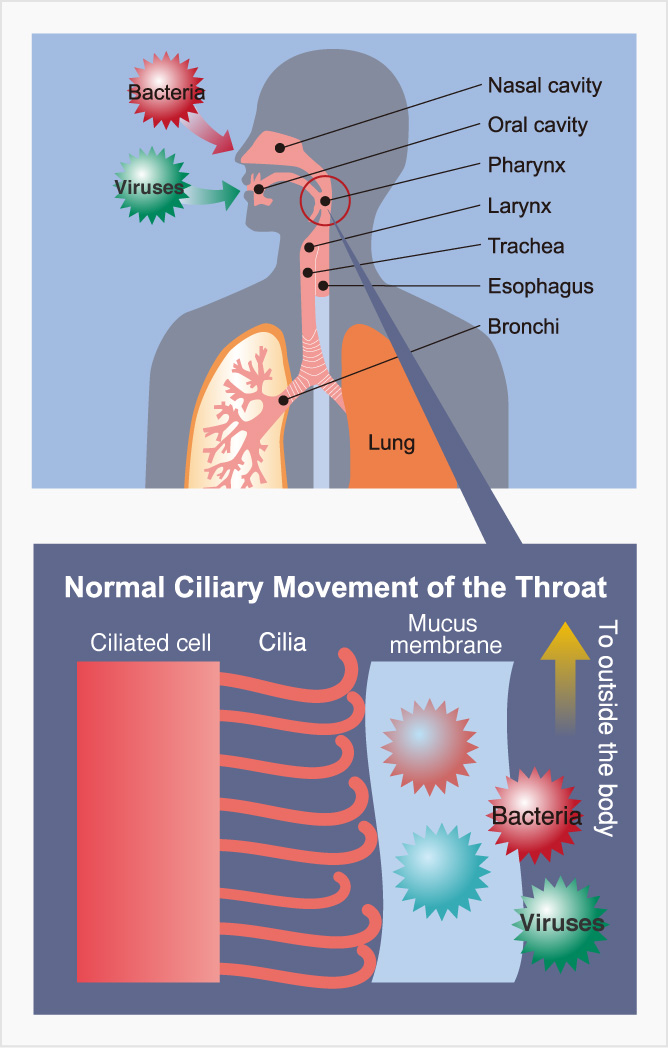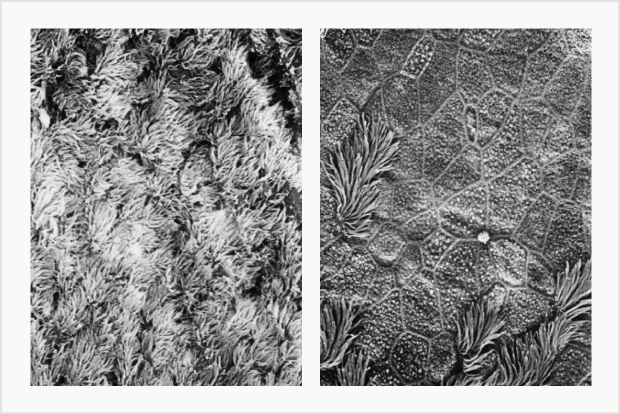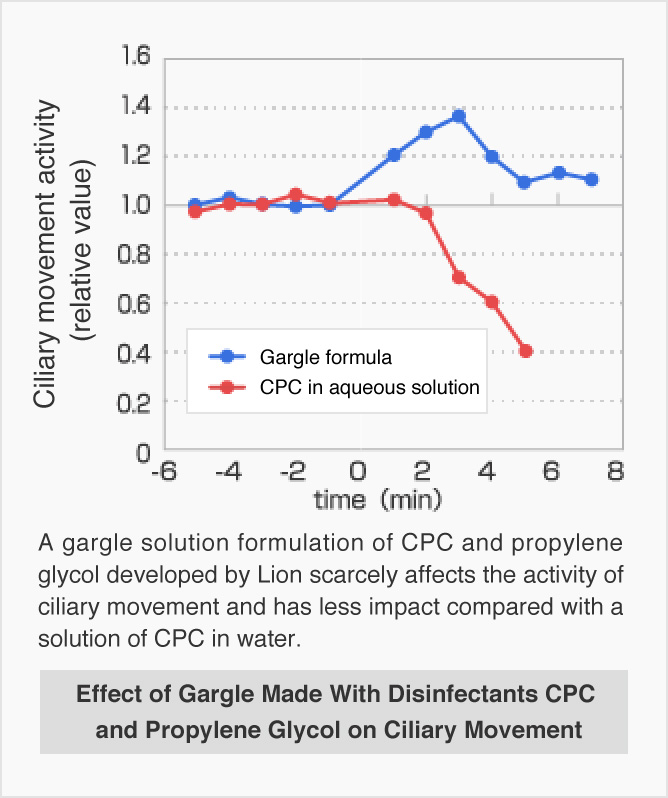We breathe about 20,000 liters of air per day. Inhaled air travels from the nose and mouth through the throat and trachea to the lungs. All this inhaled air contains foreign particles, such as dust, smoke, mold, bacteria and viruses. The mucus membranes and cilia (tiny hair-like structures that extend from the cell body) covering the inner surfaces of the airway, from the throat to the lungs, help keep such foreign material from reaching the lungs.
Foreign materials entering the airway are trapped by mucus and transported outward by the cilia at a rate of approximately 0.5–1 centimeter per minute. Once they reach the pharynx, these materials are expelled as phlegm or swallowed via the esophagus and digested in the stomach.
The motion by which cilia transport foreign materials resembles crowd surfing, where the surfer (in this case the foreign material) is passed overhead from person to person. Egesting foreign materials from the lungs to the top of the throat by this process takes about 30 minutes. Cilia, each of which is only one-thousandth of a millimeter in diameter, thus play an important role in protecting our bodies from foreign materials.

A significant weakness of cilia is their sensitivity to low temperatures and dryness. This is one reason that we are more susceptible to the flu in winter.
Using a muffler and surgical mask can protect cilia—a muffler warms the neck, and a mask can prevent throat dryness.
The photo on the left shows a healthy mucous membrane in the trachea. The cilia growing on the cell membranes resemble like a dense shag carpet and look like grass rippling in the breeze.
The photo on the right shows cells that have lost their cilia due to an influenza infection. It takes about three to four weeks for these mucosal cells to regenerate.
(Left) Healthy ciliated cells.
(Right) Cells with extensive cilia loss due to an influenza infection.
(Photo credit: Dr. Jun Tamaoki, Tokyo Women’s Medical University)

Because the throat is close to the entrance of the airway, foreign materials entering with air frequently adhere to its walls, as do debris from the mouth. The throat is also the end point of the ciliary transport system that sweeps foreign materials up from the lungs and trachea. Supplementing the function of ciliary movement by rinsing away all these foreign materials is one of the purposes of gargling.
At the same time, a gargle should clean and sterilize the throat. In light of these objectives, we sought to develop a gargle with a disinfectant that sterilizes the throat without negatively impacting ciliary movement. We investigated various disinfectants and formulations, and found that cetylpyridinium chloride (CPC), a disinfectant already used in gargles, does not hinder ciliary movement when diluted in normal saline solution. Unfortunately, however, this solution tasted too salty to be feasible as a product, particularly when considering usage by children.

We thus searched for a substitute for saline solution. To be considered a viable product, in addition to not hindering ciliary movement or the disinfectant effect, the substitute had to meet a variety of conditions, such as those related to taste, viscosity and stability. This led us to propylene glycol. Highly soluble in water and alcohol, propylene glycol is commonly used in cosmetics for its moisture-retaining properties and is also used to improve the antiseptic properties of cosmetics and pharmaceuticals.
The gargle we made by blending the disinfectant CPC in propylene glycol has been found to achieve a disinfectant effect on the throat while scarcely affecting ciliary movement. At the same time, because it does not have a strong taste, like iodine-based gargles, it is less likely to trigger the gag reflex, even among children.
Our research into the relationship between gargling and ciliary movement led to the creation of a new gargle solution that can wash contaminants from the throat without harming ciliary movement.
Back to Science Journal Menu